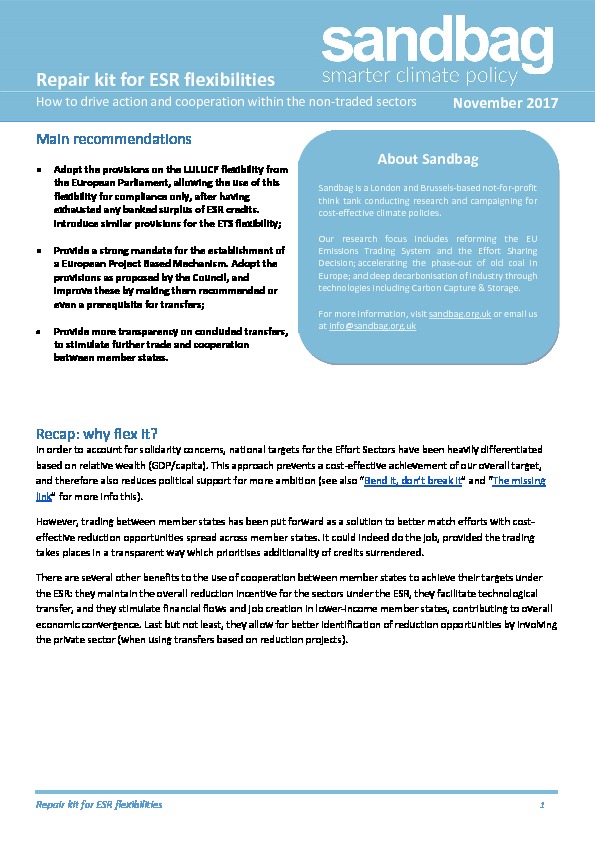
Click here to view our briefing on ESR flexibilities
With the latest proposals for the design of flexibilities in the Effort Sharing Regulation, there is a risk that member states will first exhaust the ‘external’ flexibilities (with the EU ETS and the LULUCF sector), before using the options of cooperation with other Member States within the ESR. This has several drawbacks:
- It reduces the incentives for reductions in the Effort Sharing sectors, risking to set them off track towards more ambitious long-term targets;
- As the additionality of the external flexibilities is questionable (especially in the case of the EU ETS), there’s an increased risk that the EU will miss its agreed reduction targets for 2030;
- The ‘external’ flexibilities don’t have the same co-benefits as cooperation between Member States under the ESR, such as technology transfer, job creation and economic convergence.
This briefing puts forward three tools to repair the flexibilities under the ESR:
- The ‘external’ flexibilities (with the EU ETS and LULUCF sectors) should only be accessible as a solution of last resort, after member states have exhausted their ESR budget (including any banked allowances);
- The use of a European Project Mechanism should be recognized and recommended, or better yet, required as a basis for transfers between Member States;
- More transparency is needed on concluded transfers between Member States, in order to allow price discovery and facilitate further cooperation.
Cover photo by Anthony Da Cruz on Unsplash used under Creative Commons license.
